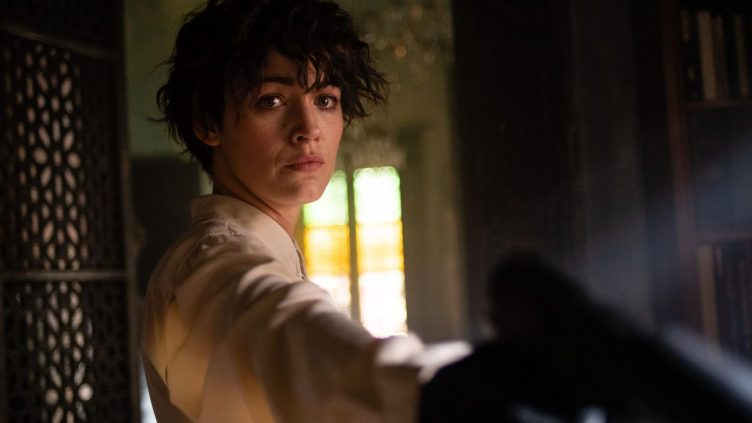
A depressed woman looks to exact revenge from those whom she believes may have killed her family in The Rhythm Section.
Stephanie Patrick (Blake Lively) wasn’t always the dour, broken person who exists mainly in the shadows. She was just as happy and full of hope as anyone until a fateful plane trip claimed the lives of her closest family — a flight on which she was scheduled to fly. Survivor’s guilt has stripped away her cheery veneer and left behind a broken ghost of someone who once was.
Little light seemed to break through into her dark existence until a journalist shows up with a stunning revelation. He’s discovered that the flight that claimed her family was the target of a terrorist attack. The sordid details are being covered up by powerful entities determined to keep the truth from getting out. It’s a realization that spurs her into a new sense of purpose — to find those responsible and make them pay.
More than anything else, The Rhythm Section is a score in search of a picture. Han Zimmer‘s distinctive production style as Executive Music Producer raises what would be a forgettable afterthought into a mildly entertaining romp.
This would-be action vehicle for Lively teases us with moments of intrigue, but fails to really deliver the goods. Heavily stripped of her normal Hollywood trappings, Lively reminds me here of a mix between Cate Blanchett and Bridget Fonda. The latter is more apropos as the film also immediately conjured up memories of Fonda’s most iconic performance as a wayward soul recast as an assassin in Point of No Return. The parallels add up too quickly to be mere coincidence.
In this incarnation of that narrative, Jude Law (secretive ex-MI6 agent Iain Boyd) becomes the force behind our would-be assassin’s training regimen. His role seems to be based on the computer network in The Matrix. When Stephanie needs a new skill, up pops Boyd to inject the requisite training. Her evolution from novice to expert seems to happen nearly as quickly as the downloads from that film. It’s just not believable. Sterling K. Brown shows up as a key component of the plot, but this is so poorly handled that he’s nearly rendered invisible.
You have to wonder if production company Eon Productions has been poorly served by their history of producing James Bond films. Such films are often carried by the power of their iconic, legendary lead characters. No such built-in bounty exists for this film, and it shows.
Lively does hint that she’s capable of playing more than a bejeweled model type, but the surrounding material was just not the right fit. There’s just enough here to keep us engaged, but not a scintilla more. Take away the driving score, and we’re left with a slow walk to nowhere.



